In our latest research brief, we focused on outlining the worker, occupations, and industries most impacted by the COVID-19 shutdown and subsequent recession. With so much to cover in this quickly evolving landscape, we will be publishing a three-part series done by SJI on behalf of the City of Seattle’s Office of Economic Development to inform the City strategies as it collaborates with the Workforce Development Council to plan our regional recovery from this unprecedented economic shutdown and recession.
This first brief, COVID-Recession & Recovery, is a snapshot of the first eight weeks of the shutdown. The data is initial unemployment claims from the Washington Employment Security Department from March 8th through May 9th, 2020. It is preliminary. ESD had to shift gears very rapidly, moving its staff entirely remote while processing 28 more times the number of applications than it had a mere 6 weeks before and many people had difficulty filing in the initial weeks. In addition, the profile of who is being laid off will change overtime as employers adjust or fail.
What our research shows right now is clear. The initial wave of affected workers is the most vulnerable: young people, workers of color, low wage-earning workers, and those with low educational attainment. These individuals face the greatest hardship in being disconnected from the workforce and the most barriers reconnecting to it when conditions improved. These demographics and many of these same workers were left behind in the recovery from the Great Recession. To create a more inclusive regional economy, it is critical to focus resources and efforts on these groups.
Read the full document here.
A special thanks to Anneliese Vance-Sherman, Ph.D. at the Washington Employment Security Department. This research brief was funded by the City of Seattle Office of Economic Development.
Get more insight from the SJI Research & Policy Team! View our archive here.

Recent Comments